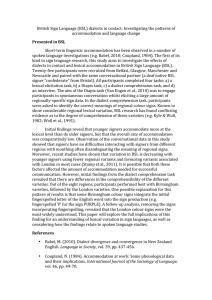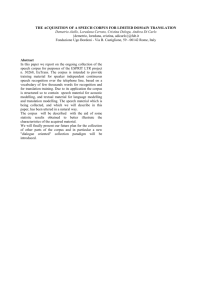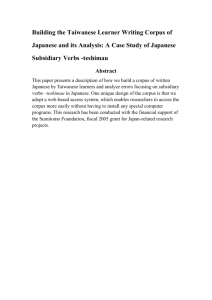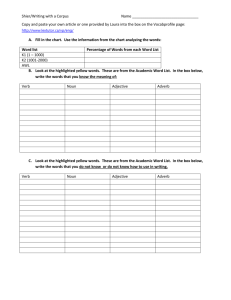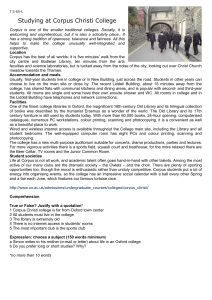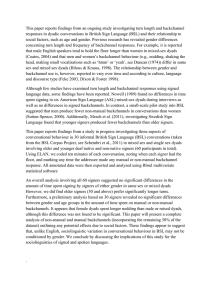British Sign Language Corpus Project: Open Access Archives and
advertisement
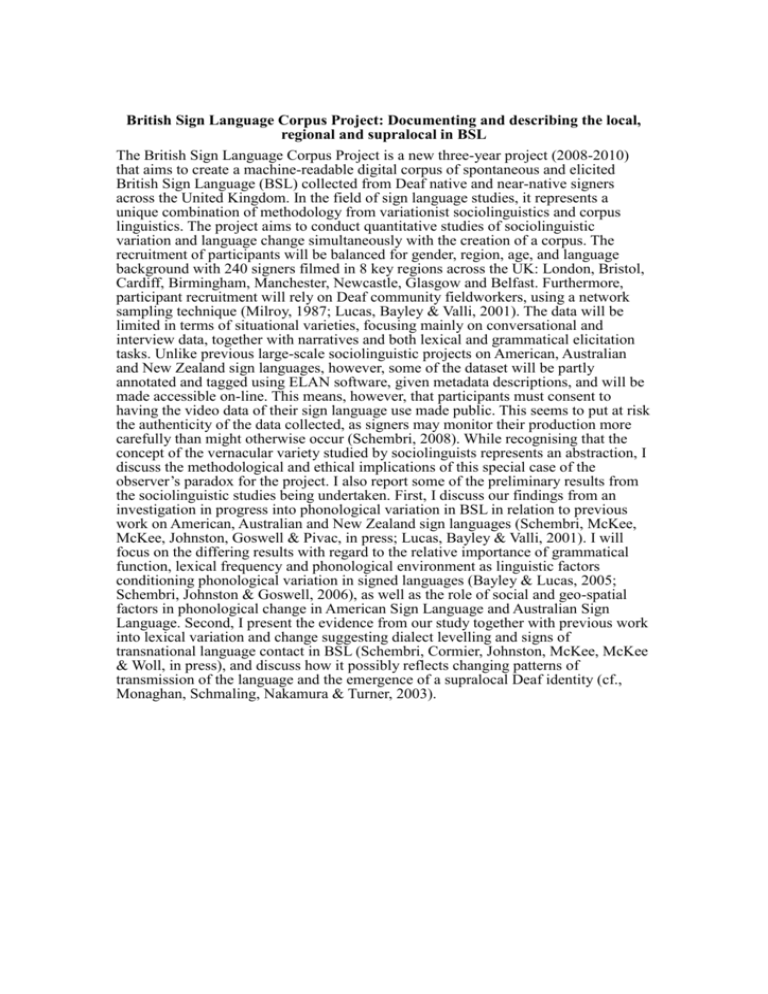
British Sign Language Corpus Project: Documenting and describing the local, regional and supralocal in BSL The British Sign Language Corpus Project is a new three-year project (2008-2010) that aims to create a machine-readable digital corpus of spontaneous and elicited British Sign Language (BSL) collected from Deaf native and near-native signers across the United Kingdom. In the field of sign language studies, it represents a unique combination of methodology from variationist sociolinguistics and corpus linguistics. The project aims to conduct quantitative studies of sociolinguistic variation and language change simultaneously with the creation of a corpus. The recruitment of participants will be balanced for gender, region, age, and language background with 240 signers filmed in 8 key regions across the UK: London, Bristol, Cardiff, Birmingham, Manchester, Newcastle, Glasgow and Belfast. Furthermore, participant recruitment will rely on Deaf community fieldworkers, using a network sampling technique (Milroy, 1987; Lucas, Bayley & Valli, 2001). The data will be limited in terms of situational varieties, focusing mainly on conversational and interview data, together with narratives and both lexical and grammatical elicitation tasks. Unlike previous large-scale sociolinguistic projects on American, Australian and New Zealand sign languages, however, some of the dataset will be partly annotated and tagged using ELAN software, given metadata descriptions, and will be made accessible on-line. This means, however, that participants must consent to having the video data of their sign language use made public. This seems to put at risk the authenticity of the data collected, as signers may monitor their production more carefully than might otherwise occur (Schembri, 2008). While recognising that the concept of the vernacular variety studied by sociolinguists represents an abstraction, I discuss the methodological and ethical implications of this special case of the observer’s paradox for the project. I also report some of the preliminary results from the sociolinguistic studies being undertaken. First, I discuss our findings from an investigation in progress into phonological variation in BSL in relation to previous work on American, Australian and New Zealand sign languages (Schembri, McKee, McKee, Johnston, Goswell & Pivac, in press; Lucas, Bayley & Valli, 2001). I will focus on the differing results with regard to the relative importance of grammatical function, lexical frequency and phonological environment as linguistic factors conditioning phonological variation in signed languages (Bayley & Lucas, 2005; Schembri, Johnston & Goswell, 2006), as well as the role of social and geo-spatial factors in phonological change in American Sign Language and Australian Sign Language. Second, I present the evidence from our study together with previous work into lexical variation and change suggesting dialect levelling and signs of transnational language contact in BSL (Schembri, Cormier, Johnston, McKee, McKee & Woll, in press), and discuss how it possibly reflects changing patterns of transmission of the language and the emergence of a supralocal Deaf identity (cf., Monaghan, Schmaling, Nakamura & Turner, 2003).




